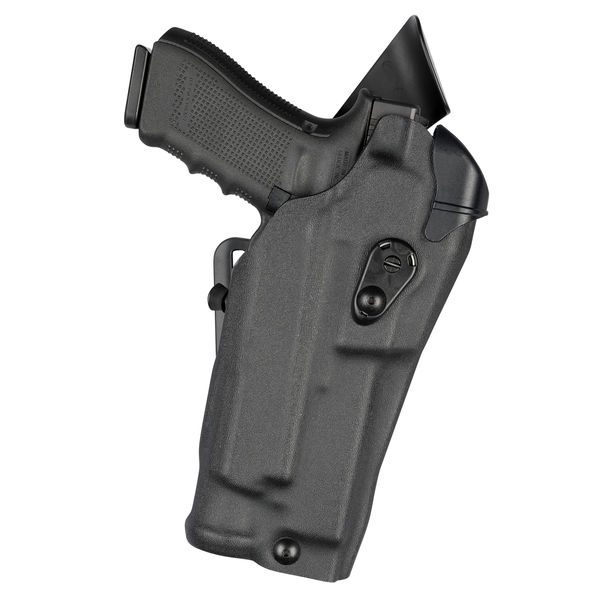How to Choose the Best Retention Holster
OutdoorHub Reporters 09.04.18

Not all holsters are created equal, nor are they used for the same task. In their simplest form, pistol holsters do little more than hold a handgun in place, and offer no retention beyond a light friction fit and maybe simple force of habit. This sort of holster usually is used where there is little to no risk of losing your gun, or in pocket holsters. More commonly, we have holsters that offer at least some sort of retention, ranging from a simple strap that goes over the grip of the gun, or perhaps a flap holster. Then we have the more modern, more effective retention holster.
Modern retention holsters were born out of a very real need. While private citizens who openly wear their handguns very rarely have to grapple for control of their gun, law enforcement and security officers may find themselves in situations where a criminal is physically attacking them, and trying to disarm them. Under these circumstances, a traditional holster with a simple retention strap is a real liability and a great way to lose control over your weapon. Enter the retention holster.
There are three levels of holster retention. Level I retention, also known as passive retention is simply a friction fit holster, typically of leather that is shaped around the gun. This offers no real protection against accidental or unauthorized access to the firearm, and should generally be avoided under nearly all circumstances.

Level II retention ups the ante with some sort of mechanical device holding the gun in place, like a backstrap, hood or similar device which slips over the gun and further holds it in place. This is probably the most common holster, and there are a number of different styles out there made of various materials including leather and nylon. We could put traditional flap holsters in this category as well.

Level III retention holsters may offer a third level of retention along with the friction fit and some sort of strap or hood. These typically have some sort of push button device which must be pressed in before drawing the holster. Use of a level III holster requires regular practice to be able to release and draw your gun in a single, fluid movement. These types of holsters are most common with law enforcement and people who choose to openly carry their handgun.

Holster ratings are somewhat confusing at times. While a common rule (which we mostly followed above) dictates a holster retention rating as being part of the number of retention devices within the holster, it actually refers to how difficult it is for a simulated attacker to take a gun under different circumstances. However, regardless if you interpret it like Safariland does in the linked article, or by number of retention devices, as long as you are getting a holster that meets your security needs.
Choosing a Retention Holster
There are two broad classes of holster customers- law enforcement/armed security and private citizens. Within those two classes, we can find a number of other markets. For instance, a SWAT officer needs a different holster than a desk jockey who is armed more out of force of habit than actual need. A private citizen carrying a gun while knocking about on the farm is using a different holster than an office worker discretely carrying a small handgun, and the person who chooses to open carry will have different holster needs.
What that means is first you need to take an objective look at the way you carry your gun and why. There are lots of different retention holsters on the market right now, some styled for particular types and models of guns, some more universal.
If you open carry outside of hunting, you really should use a level III retention holster, or a level II at worst. While criminal efforts to target open carriers are rare to nearly non existent, it is simply the prudent thing to do. In the woods, a more passive retention is generally fine, I personally just use a strap across a well fitted holster and call it good.
There is pretty much never any reason to use a Level III holster for concealed carry. The bulk and complexity of operation defeat the purposes of concealed carry, and besides those sorts of holsters are typically designed for law enforcement duty work where high retention is important.
In many circumstances you can get away with a simple friction fitting holster for concealed carry, particularly when pocket carrying or carrying inside the waistband. You probably still want a strap or hood of some sort if wearing your gun on your belt.
Conclusion
Choosing a retention holster can be difficult. Much ink has been spilled in the gun world around holsters, holster retention levels, gun retention tactics and methods, and this debate will continue for as long as there are handguns and holsters.
The most important choice you can make is to ensure that your gun is secure in the holster until you need to remove it. And ultimately, only you can decide what is the correct approach to that end.

